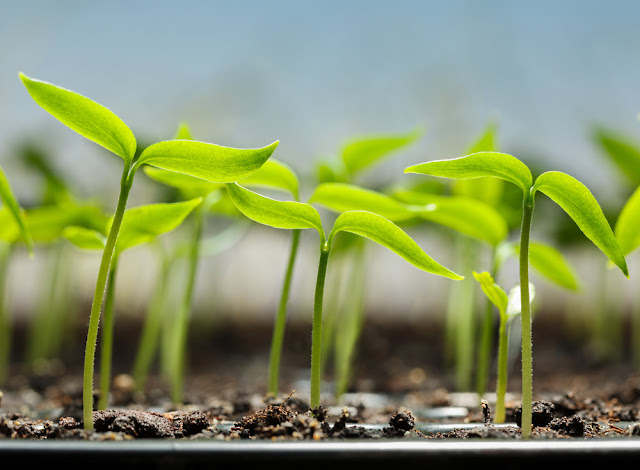Plant Phenotyping: The Future of Agriculture
 |
| Plant Phenotyping |
What Is Plant Phenotyping?
Plant phenotyping is defined as the measurement of the physical and biochemical
characteristics of plants. More specifically, it involves observing visible
plant traits related to growth, development and performance under different
environmental conditions. Some key traits measured in plant phenotyping
include:
- Morphology (shape, size, color, etc.)
- Growth rate and development
- Water use efficiency
- Response to biotic (disease, pest) and abiotic (drought, temperature)
stresses
- Yield and quality parameters
With advances in sensors, imagery and analytics, high-throughput Plant
Phenotyping now allows us to non-destructively observe thousands of
plants in field and controlled conditions. This rapid evaluation and
quantification of plant traits at different growth stages is critical for plant
breeding and agricultural research.
Benefits of High-Throughput Phenotyping
Compared to traditional manual measurement methods, automated phenotyping
platforms can evaluate far greater numbers of plants in less time. This
massively increases the power and efficiency of plant breeding programs. Some
key benefits include:
Increased Selection Gain and Shortened Breeding Cycles
By rapidly screening large populations, breeders can more precisely select
superior traits and cultivars. This leads to accelerated genetic gains per year
and shorter times to develop new stress-tolerant crop varieties.
Earlier and More Robust Trait Discovery
Powerful phenotyping tools allow researchers to detect subtle trait variations
earlier and more accurately. This facilitates discovery of novel genes and
pathways influencing critical agronomic traits.
High-Resolution Understanding of Genotype-Phenotype Relationships
Dense phenotypic data collection enables development of detailed genetic maps
linking DNA variations to observed plant responses. This furthers our knowledge
of how genes control complex agronomic traits.
Improved Crop Modeling and Decision Support Systems
Extensive field phenotyping data feeds crop simulation and decision support
tools. These digital agronomy platforms then help optimize crop and soil
management practices for improved productivity and sustainability.
Phenotyping Platforms and Methodologies
Plant phenotyping research employs a range of instruments, sensors and imaging
systems for non-invasive, high-throughput field and greenhouse trait
measurement. Some common phenotyping methodologies include:
Field-Based Platforms: Field phenotyping platforms such as the Lemnatec Field
Scanalyzer use tram-like systems equipped with RGB and hyperspectral cameras to
image and phenotype large field plots over time.
Greenhouse Conveyor Systems: Conveyor belt systems like Lemnatec Plantskydd
continuously move pots through imaging chambers for whole-plant destructive and
non-destructive evaluation under controlled environments.
Multispectral and Hyperspectral Imaging: These techniques utilize the visible
and infrared spectral signatures of plants to extract physicochemical traits
related to drought stress, nutrient deficiencies and disease.
Thermal Imaging: Thermal cameras detect leaf, canopy and root zone temperature
variations providing insights into plant water status and stress responses.
Canopy Light Interception: Accurate low-cost sensors that measure canopy
structure, light absorption properties and photosynthetic efficiencies aid
selection for optimized canopy architecture.
Precision Phenotyping Traits: Novel sensor platforms aim to precisely quantify
subtle phenotypes like root architecture, stomatal conductance, epidermal cell
patterning that were previously difficult to measure at large scales.
Advancing Global Food and Nutritional Security
Automated plant phenotyping promises to play a defining role in advancing
global food and nutritional security over the coming decades. By turbocharging
plant breeding with high-dimensional phenotypic data, innovative researchers
and growers will be able to:
- Develop highly stress-tolerant and nutrient-dense staple crop varieties
tailored for changing climates across different agroecological zones.
- Continuously enhance major crop yields towards meeting the demands of a
growing world population estimated to reach nearly 10 billion people by 2050.
- Breed new cultivars optimized for mechanized precision agriculture and
optimized input usage for improved resource efficiency and farmer livelihoods.
- Engineer nutrition-fortified varieties addressing key vitamins and
micronutrient deficiencies still affecting billions worldwide.
The rapid evolution of plant phenotyping technologies represents a tremendous
opportunity to revolutionize agriculture sustainability, resilience and human
well-being on a global scale. With sustained investments and multidisciplinary
research, this transformative area holds immense promise to nourish communities
worldwide for generations to come.
Get
more insights on this topic: Plant
Phenotyping



Comments
Post a Comment